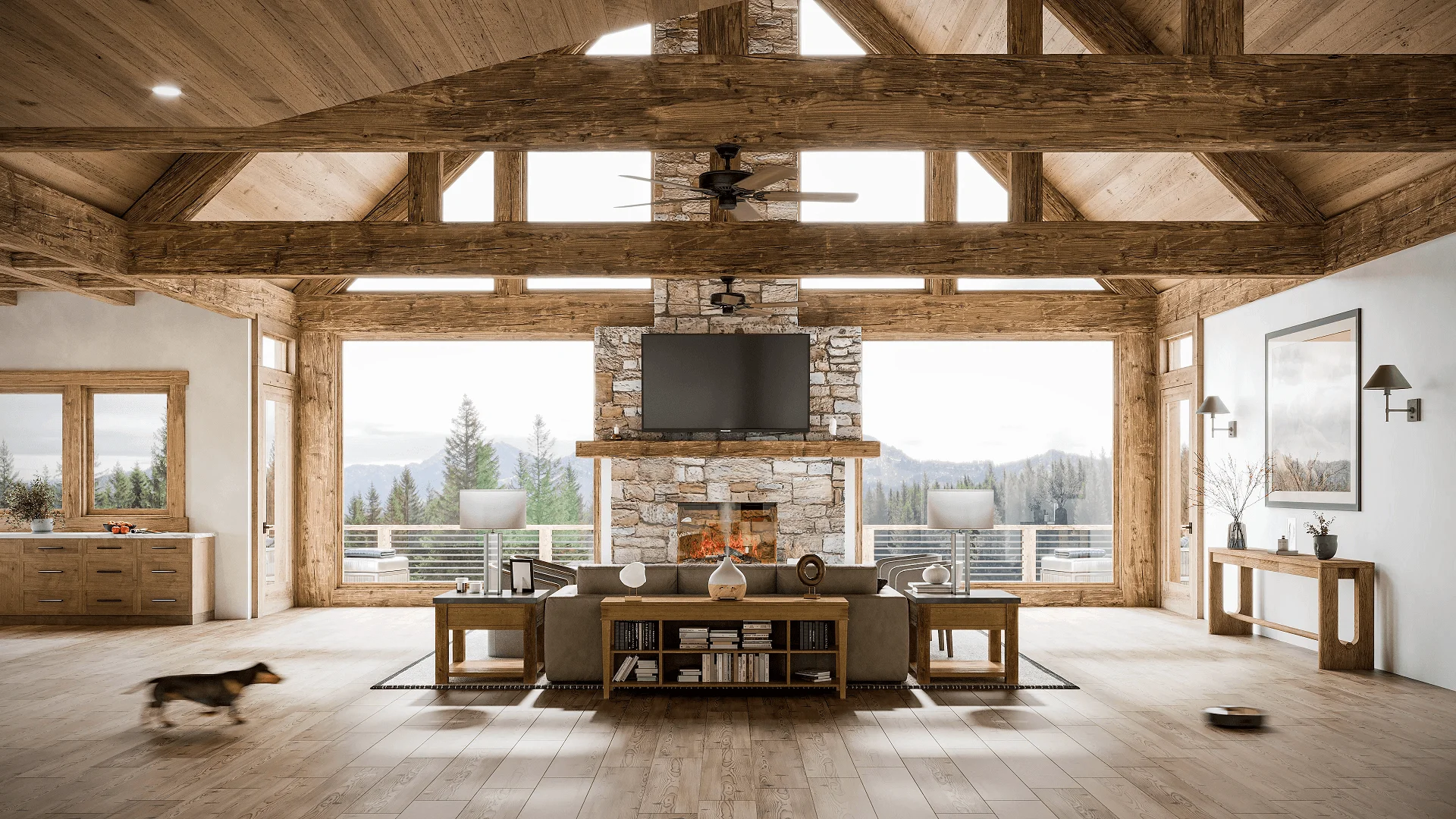Interior designers juggle a lot in their work – creativity, client expectations, timelines, and budgets. Amidst all that, presenting concepts clearly and getting quick approvals can be a challenge. That’s where a 3D render for interior design can step in. This tool has become essential for modern workflows, helping design professionals turn ideas into photoreal visuals before any actual work begins.
As a 3D rendering studio, we work with interior designers who want to enhance their presentations, reduce revisions, and impress clients. Based on our experience, we’re sharing insights into how 3D visualization services help design pros work smarter. Let’s dive in!
#1. What Is a 3D Render for Interior Design?
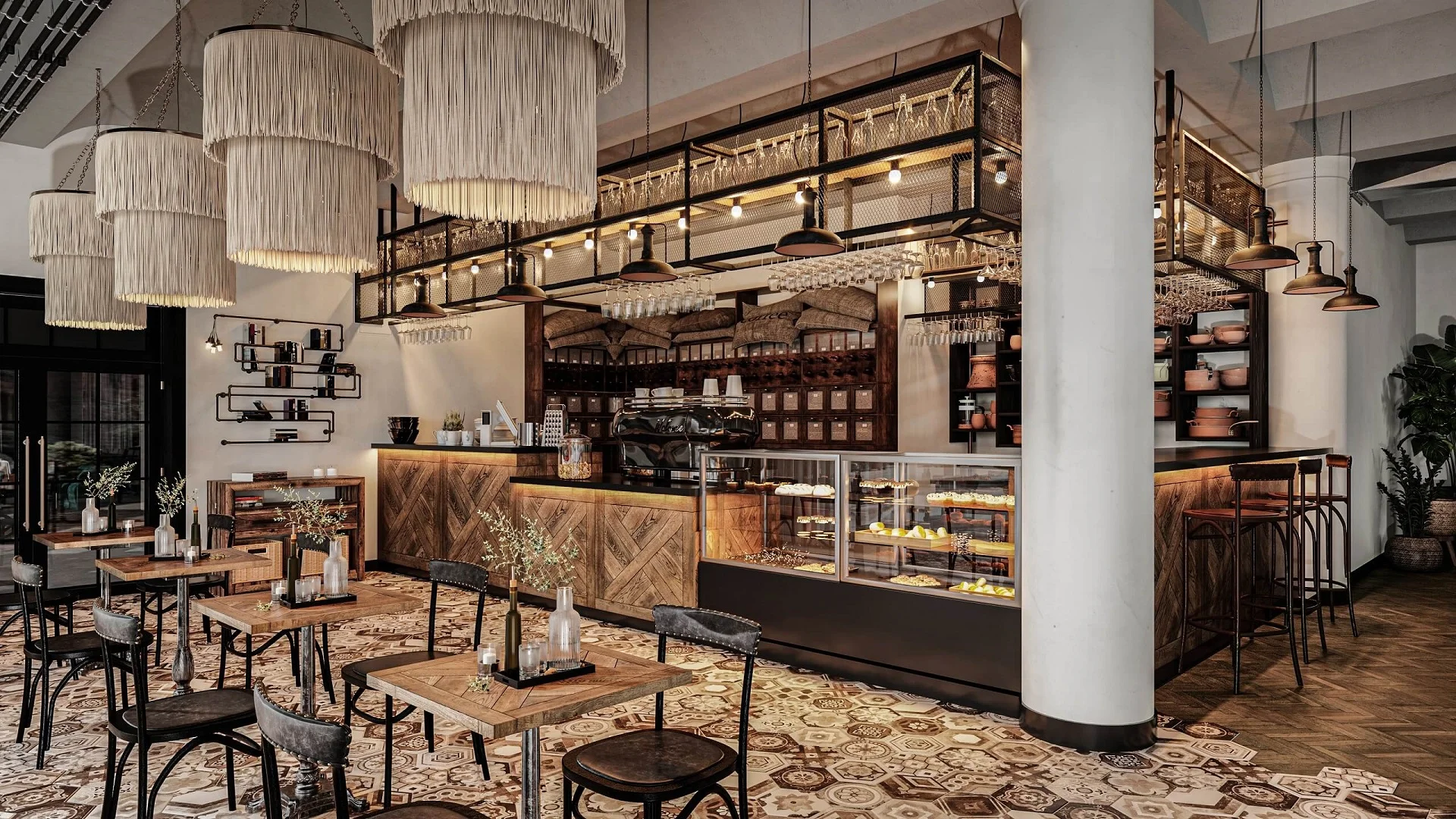
A 3D rendering for interior design is a computer-generated image that offers a realistic view of a proposed space. It translates floor plans, mood boards, and sketches into a polished visual with decor, furniture, realistic textures, and lighting. These renders allow interior designers to preview how a space will look before being built or renovated. They provide clarity for both designers and clients and ensure they’re on the same page. That is why 3D interior rendering services have become a must-have in the industry. Whether it’s a home renovation or a commercial fit-out, 3D visualization makes the design intent crystal clear.
#2. Why Interior Designers Outsource 3D Render
Most interior designers don’t create 3D visuals in-house. Instead, they outsource render tasks – and for good reasons. What are they?
#2.1. Time-Saving for Core Design Work

Rendering is time-consuming. Creating a high-quality 3D image requires hours of modeling, texturing, lighting, and post-processing. Outsourcing frees up time for core activities like concept development, material selection, and client communication – the parts that truly need the designer’s input.
#2.2. Lack of In-House Rendering Expertise
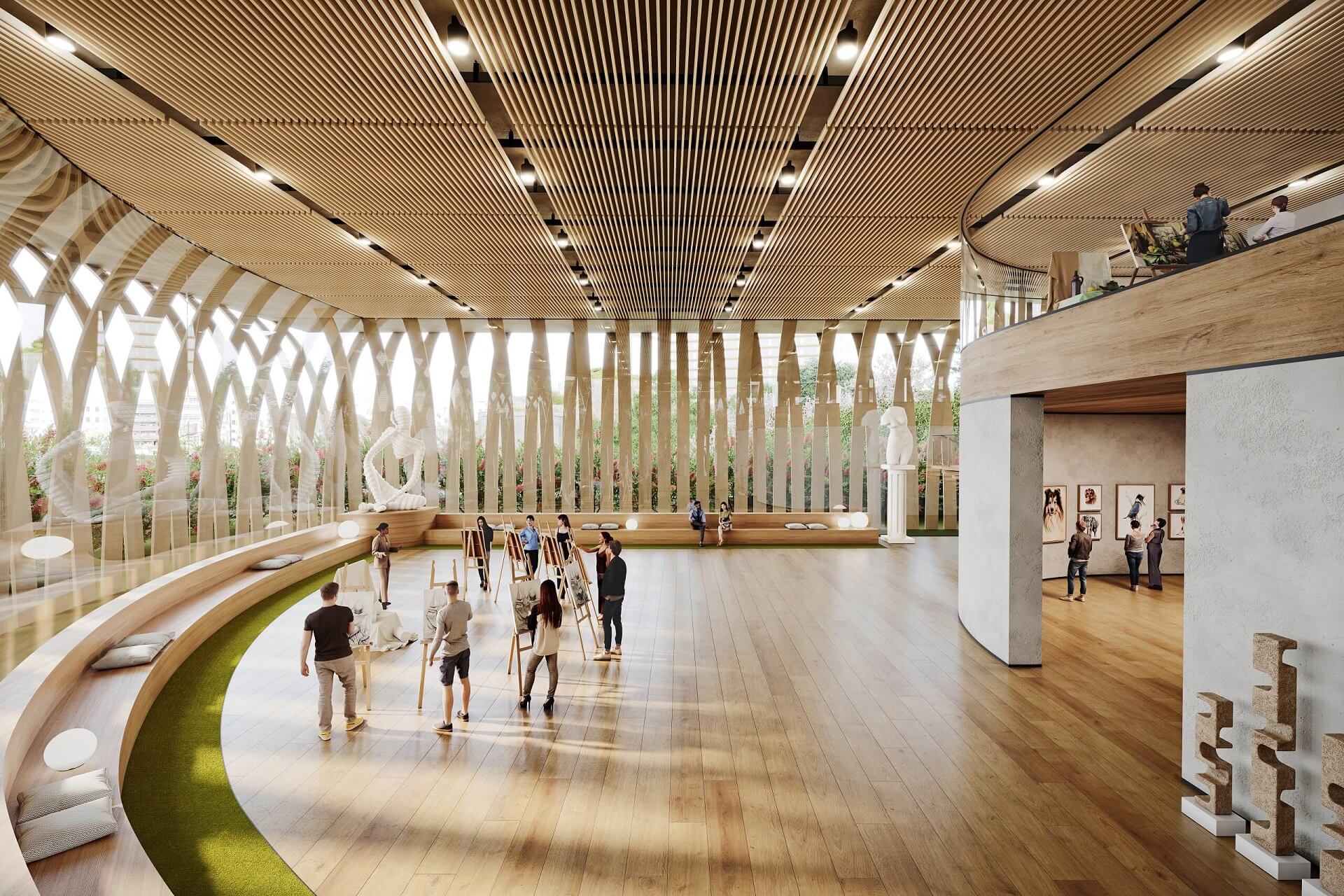
Creating a good 3D render is a technical craft. It involves using complex software and knowing how to mimic real-world physics like light bounce and material behavior. Many studios or independent designers simply don’t have a dedicated CGI artist on the team – nor do they need one full-time.
#2.3. Access to Specialized Tools and Skills Without Investment
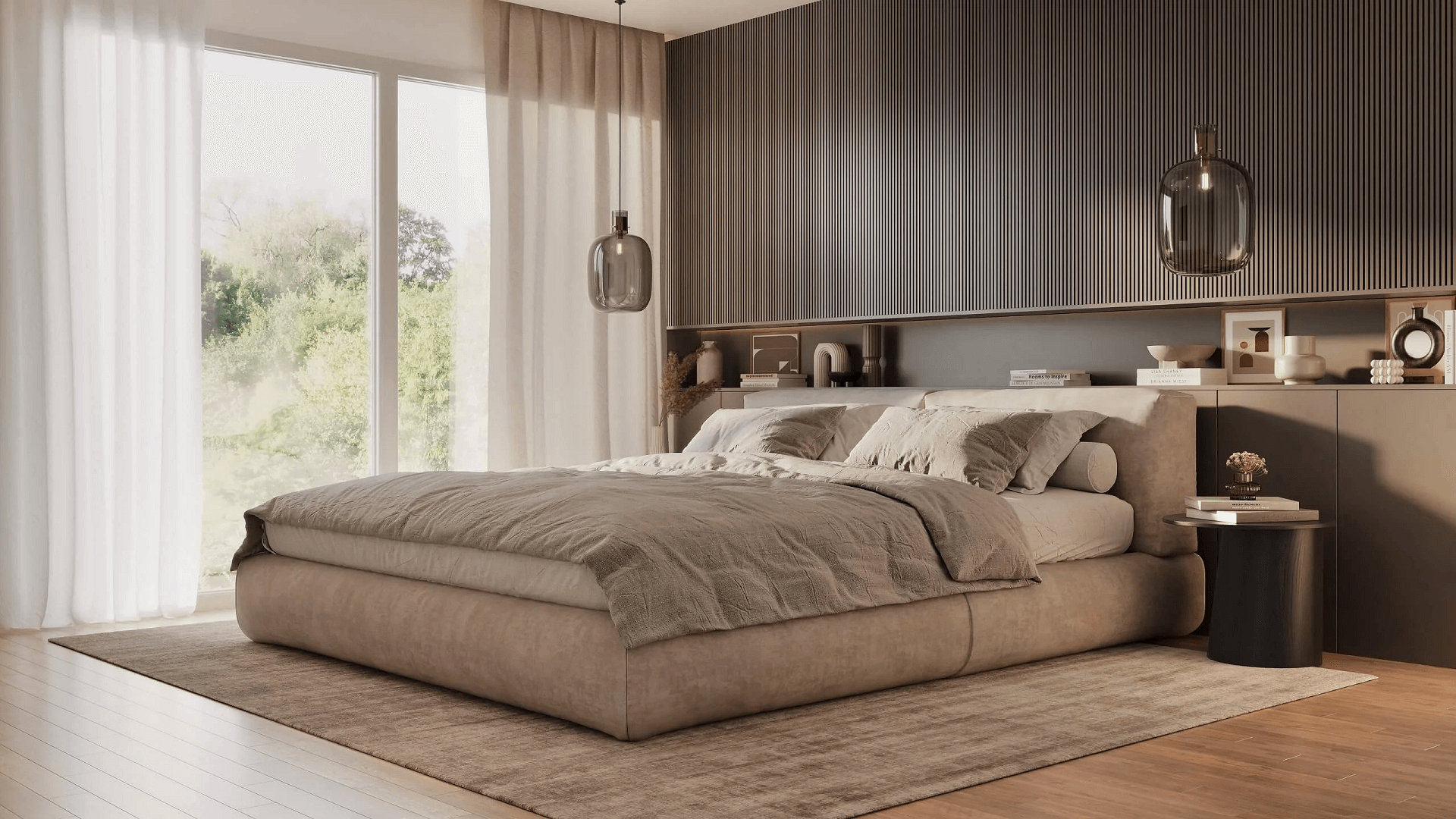
Professional 3D rendering companies already have access to powerful software, hardware, and trained specialists. Designers can benefit from these without investing in licenses, equipment, or training. This makes outsourcing the creation of a 3D render for interior design a smart and cost-effective choice.
#3. Key Benefits of Using 3D Visualization Services
Outsourcing render creation saves time and unlocks many benefits impacting design quality, client satisfaction, and business growth.
#3.1. Faster Client Approvals Through Realistic Visuals
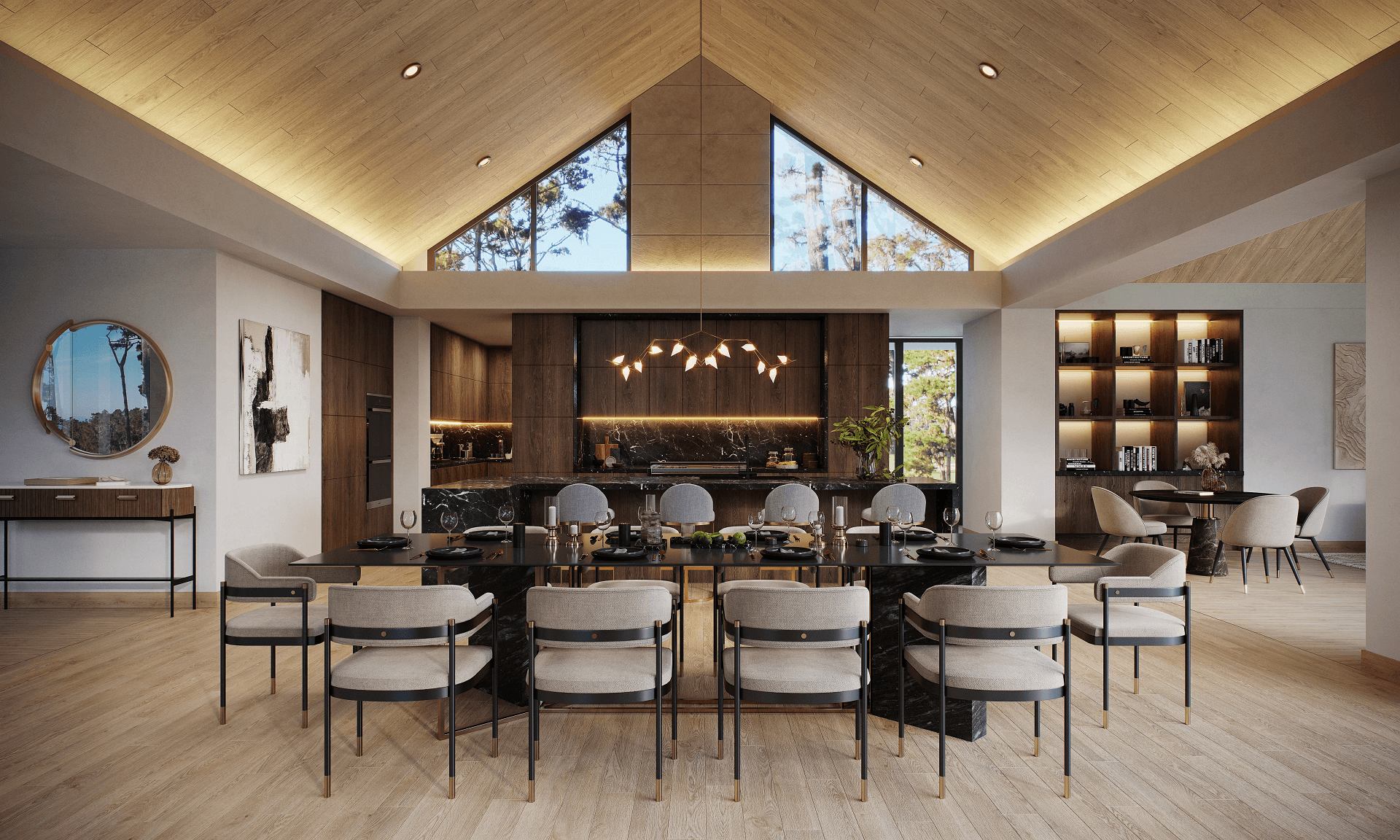
Photorealistic 3D visuals help customers “see” the final space. This reduces confusion and builds trust early in the process. As a result, designers can speed up project timelines.
#3.2. Better Communication of Design Intent
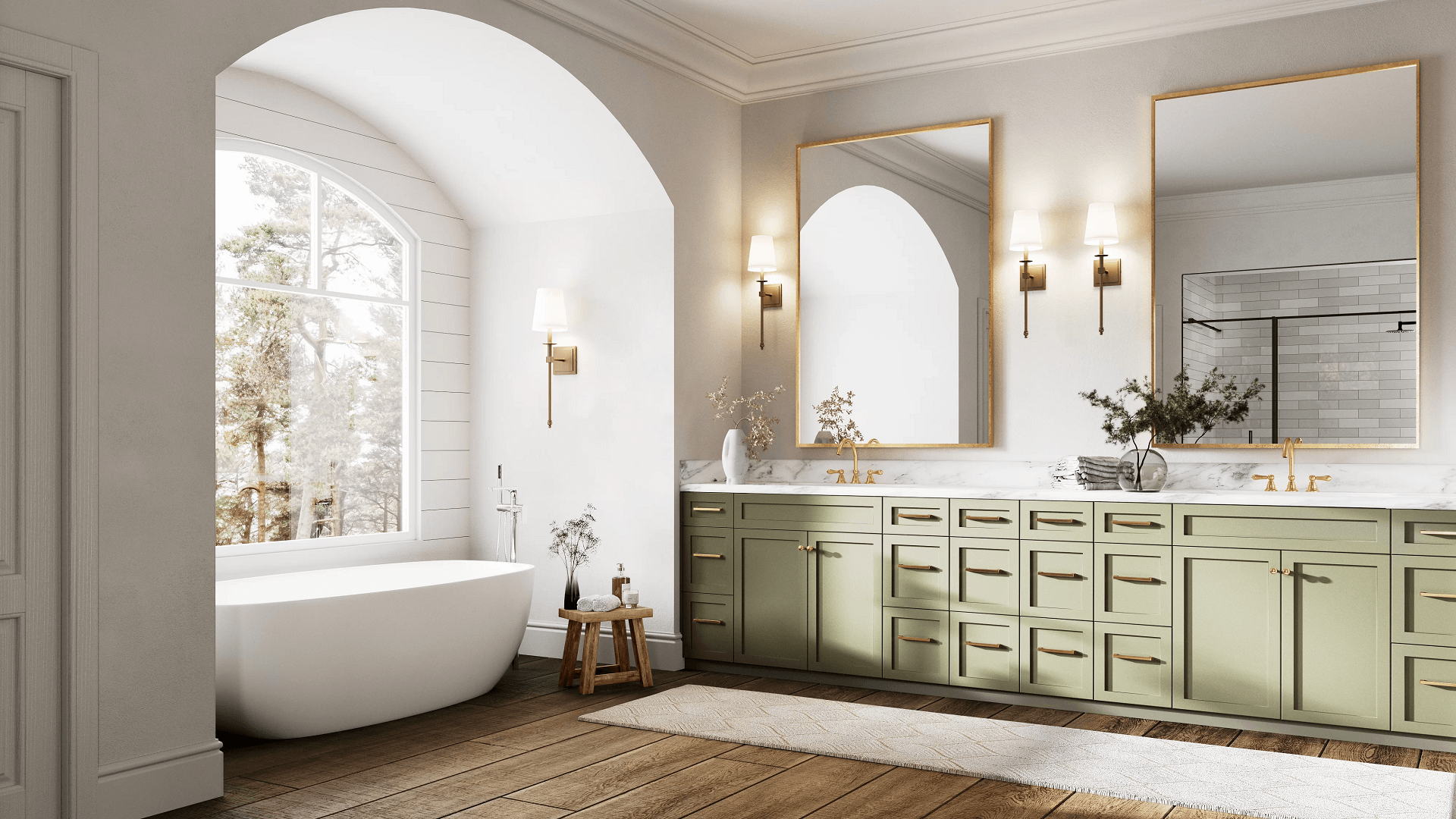
Plans and sketches can be hard to interpret for non-professionals. With interior design 3D visualization, there’s no room for doubt. You can clearly communicate materials, lighting, layout, and atmosphere, ensuring that clients, contractors, and stakeholders are all on the same page.
#3.3. Reduced Number of Revisions

When customers understand the design from the start, there are fewer changes later. Clear visuals minimize back-and-forth and help spot potential issues early. That means fewer delays and a smoother workflow.
#3.4. Competitive Edge in Presentations and Pitches
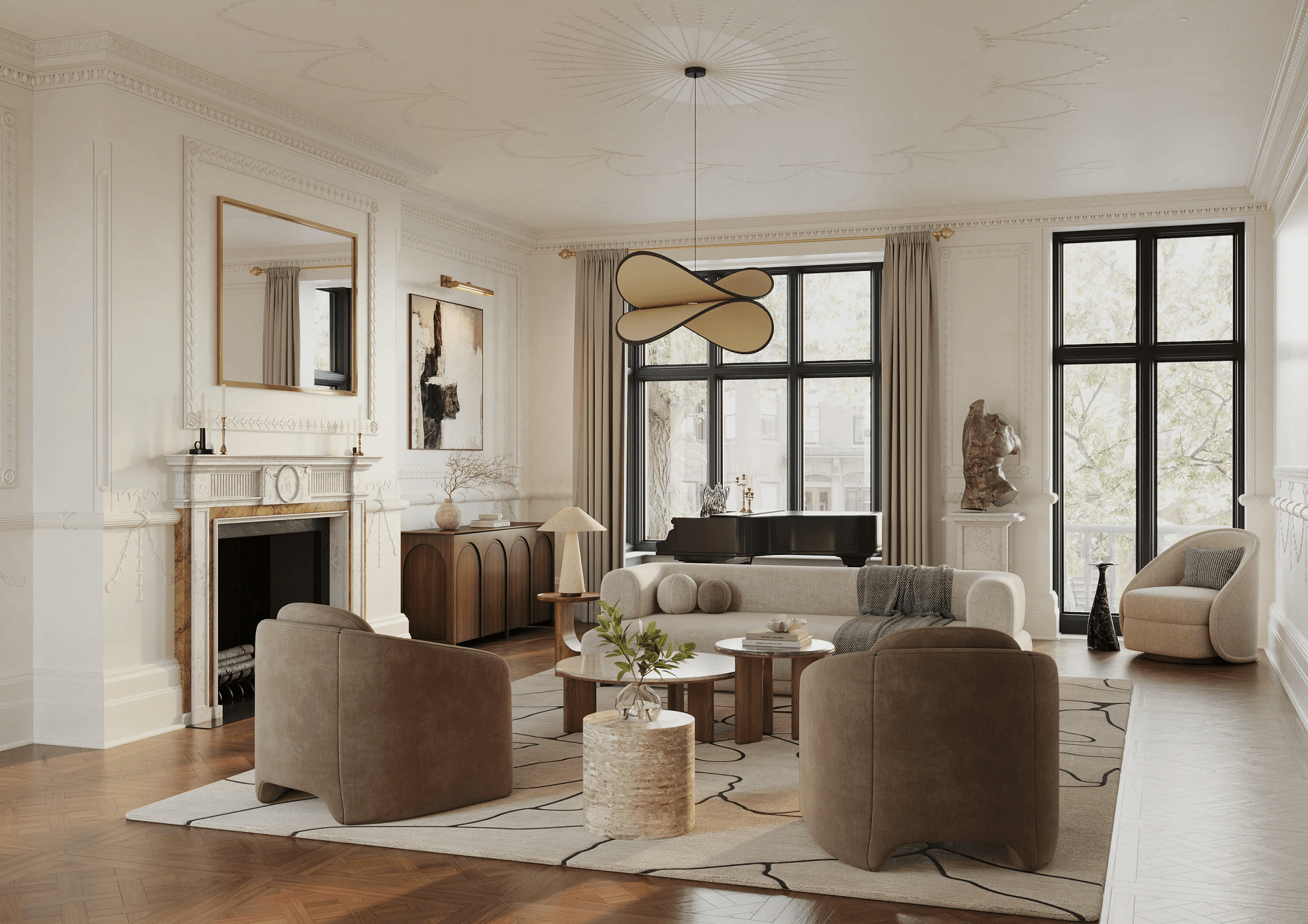
In a crowded market, a professional photoreal 3D render for interior design helps you stand out. Whether you’re presenting to a private client or pitching for a commercial project, high-quality visuals make your work more persuasive and memorable.
#4. When to Use a 3D Render in Your Workflow
A 3D render fits into several stages of the interior design process. Knowing when to use it helps maximize its value and impact.
#4.1. During Concept Development
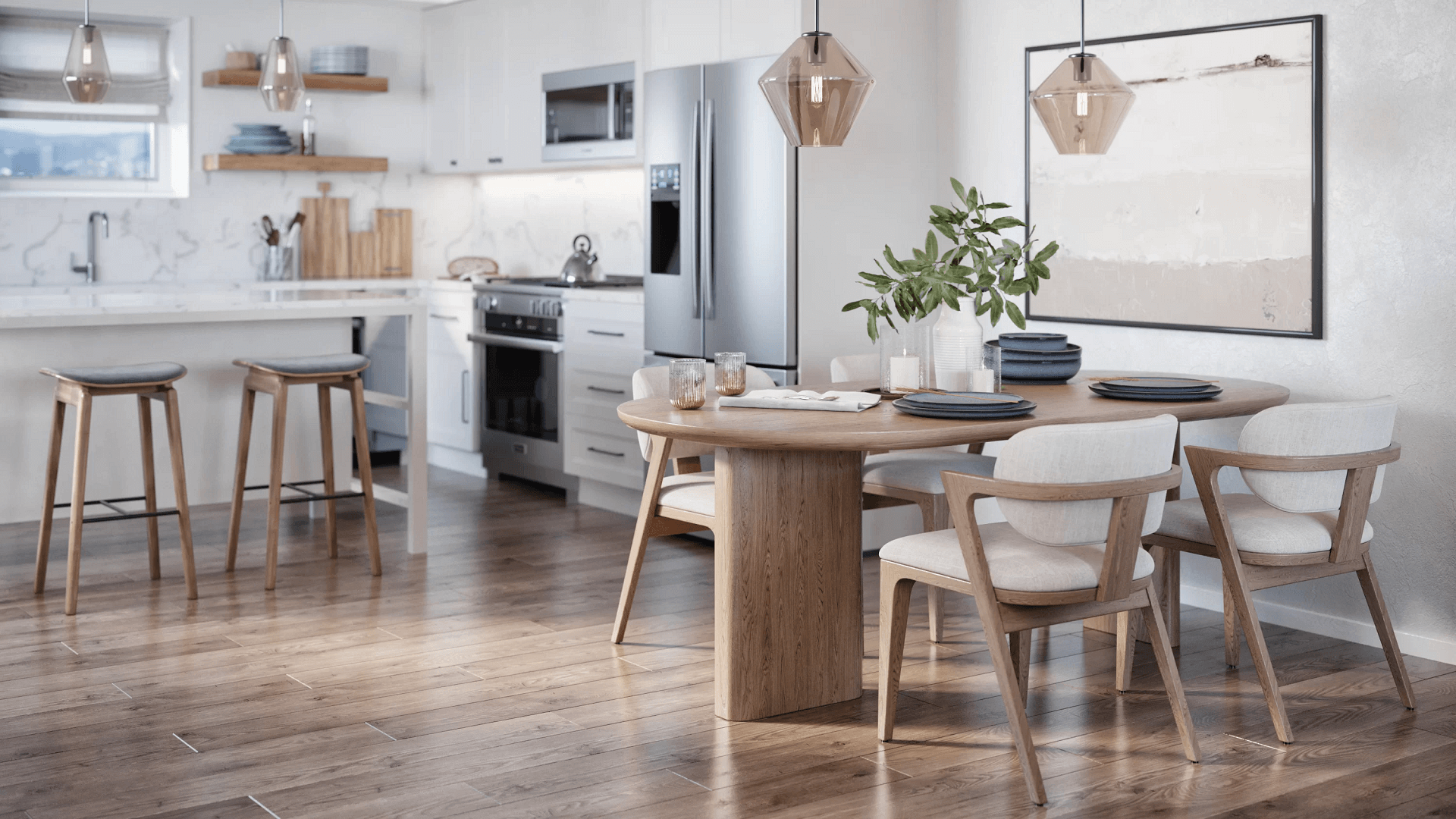
Early in the design process, 3D visuals can help test out ideas quickly. Want to compare two layouts or material palettes? Renders make it easier to explore options and make confident decisions before moving forward.
#4.2. During Client Presentations
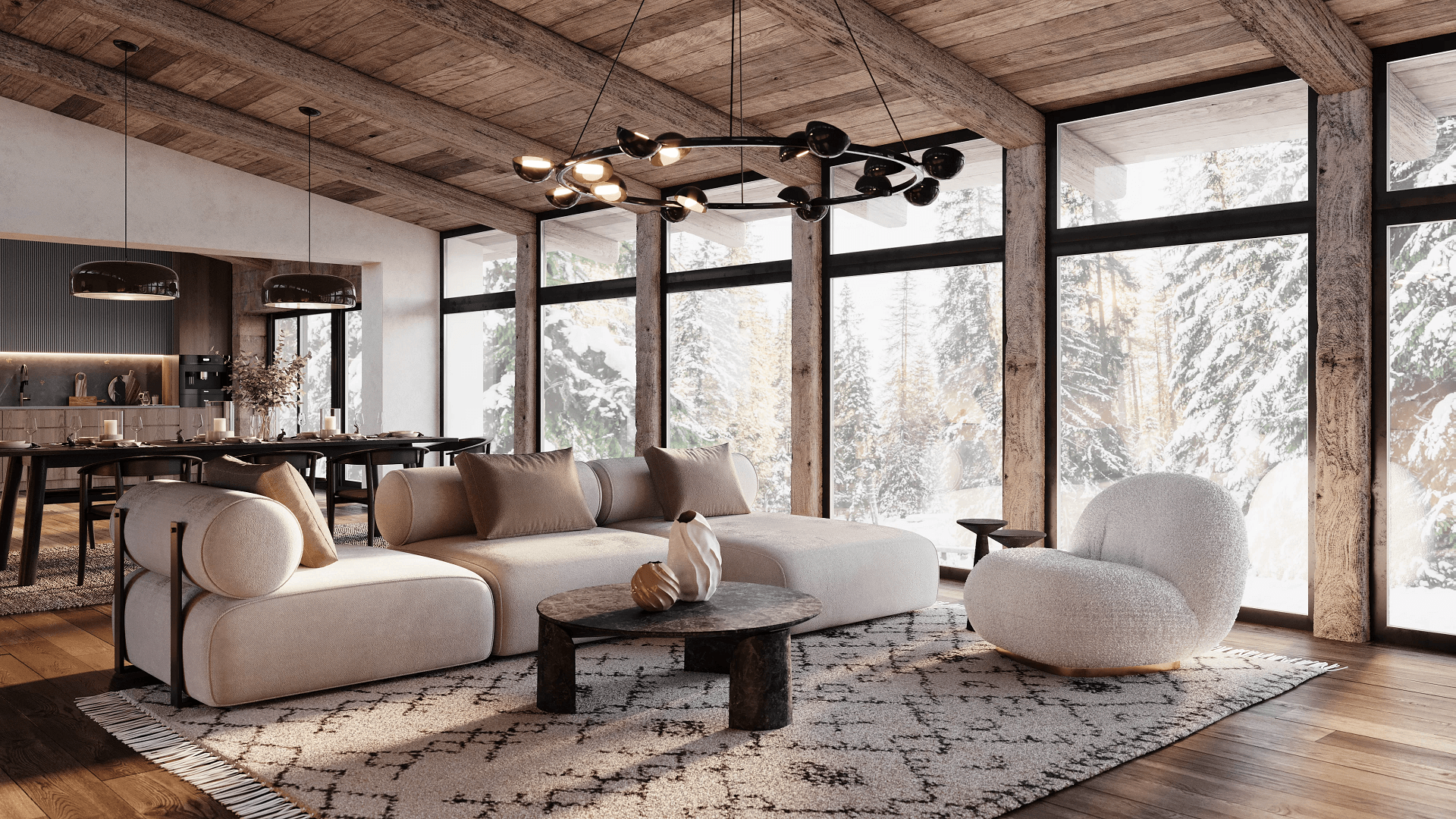
This is where a 3D render can shine. High-quality visuals allow clients to understand your vision instantly. They also make your proposals more professional and emotionally engaging. And this is the key when you need approvals or sales.
#4.3. For Portfolio and Marketing Materials
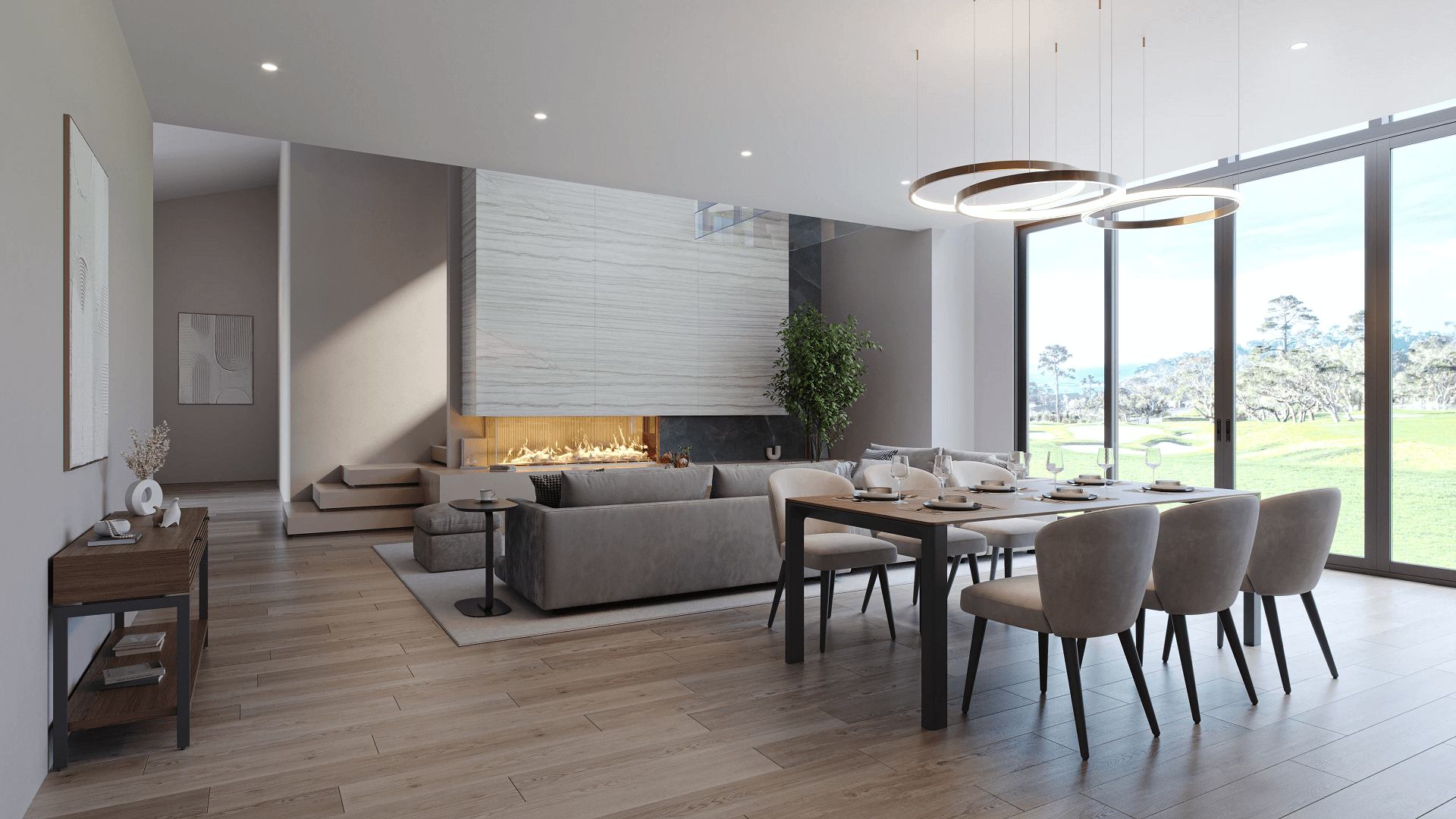
Great projects deserve to be showcased. Even if a design hasn’t been built yet, 3D renders can be used in portfolios, websites, and social media. They allow you to promote your services and attract new customers without waiting for photos of completed projects.
#5. Types of 3D Renders Used in Interior Design
Interior designers can choose from several types of 3D visuals depending on their goals and the project stage. Combining them, though, is often the most effective strategy. So, what are the main formats used?
#5.1. Still Images (Static Renders)
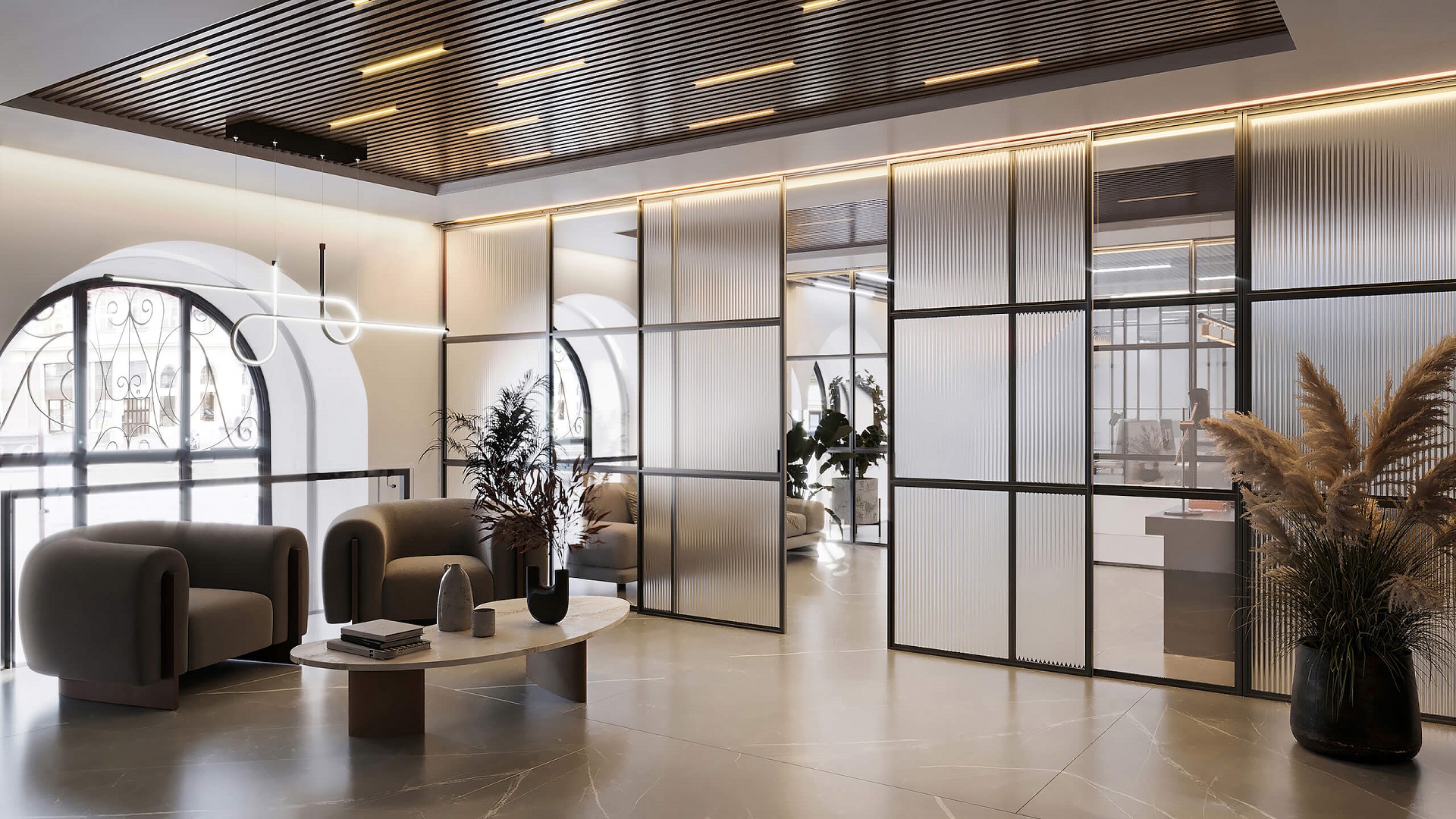
These are the most common types of 3D rendering for interior design. Still renders show detailed room views with realistic materials, lighting, and shadows. They’re perfect for presentations, portfolios, and websites. They’re also easy to use on social media or in printed materials. For that reason, still 3D renders are used for a great variety of projects. Residential, commercial, and hospitality 3D rendering services usually include static imagery.
#5.2. 360° Panoramas and Virtual Tours
This type of 3D render for interior design allows viewers to “look around” the space from different angles using a smartphone, tablet, or VR headset. Virtual tour 3D rendering is a great way to make the presentation more immersive. It works especially well for remote clients and large-scale projects.
#5.3. Animated Walkthroughs and Flythroughs
An architectural walkthrough or flythrough simulates a guided journey through the designed space. They’re ideal for large-scale projects where understanding the transition between spaces and the layout flow is essential. Think, for example, of hospitality projects, such as hotels or large restaurants. With subtitles, voiceovers, and captions, these animations can be as informative as they are emotionally compelling.
#6. What to Look for in a 3D Rendering Partner
Not all CGI providers are equal. To get reliable results, interior designers should evaluate their partners carefully. Here’s what to check.
#6.1. Experience in Interior Design Projects
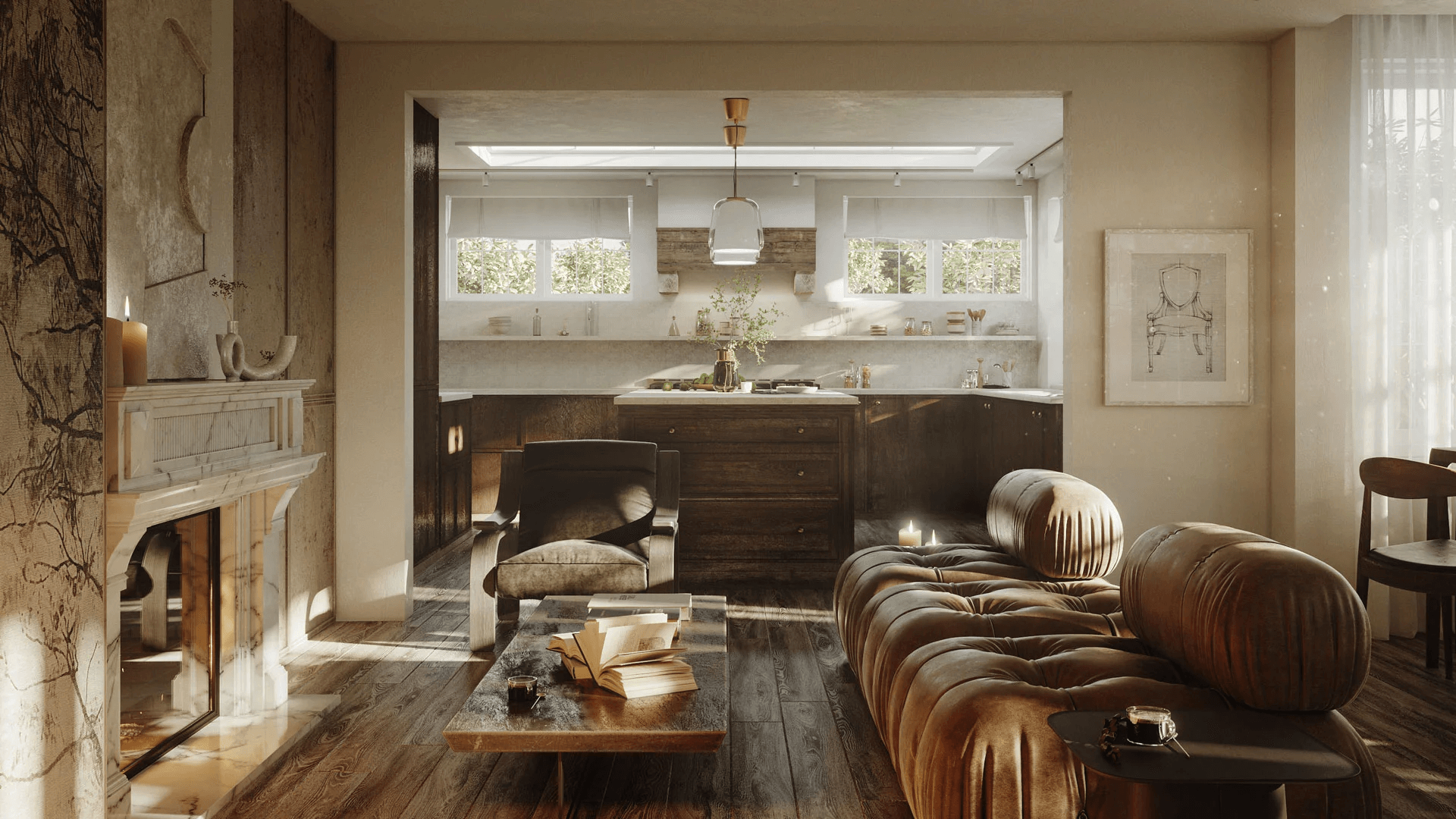
Look for a provider specializing in interior render work – not just CGI in general. A team that understands space planning, lighting balance, and décor detailing will better translate your vision into accurate visuals.
#6.2. Portfolio Quality and Style Match
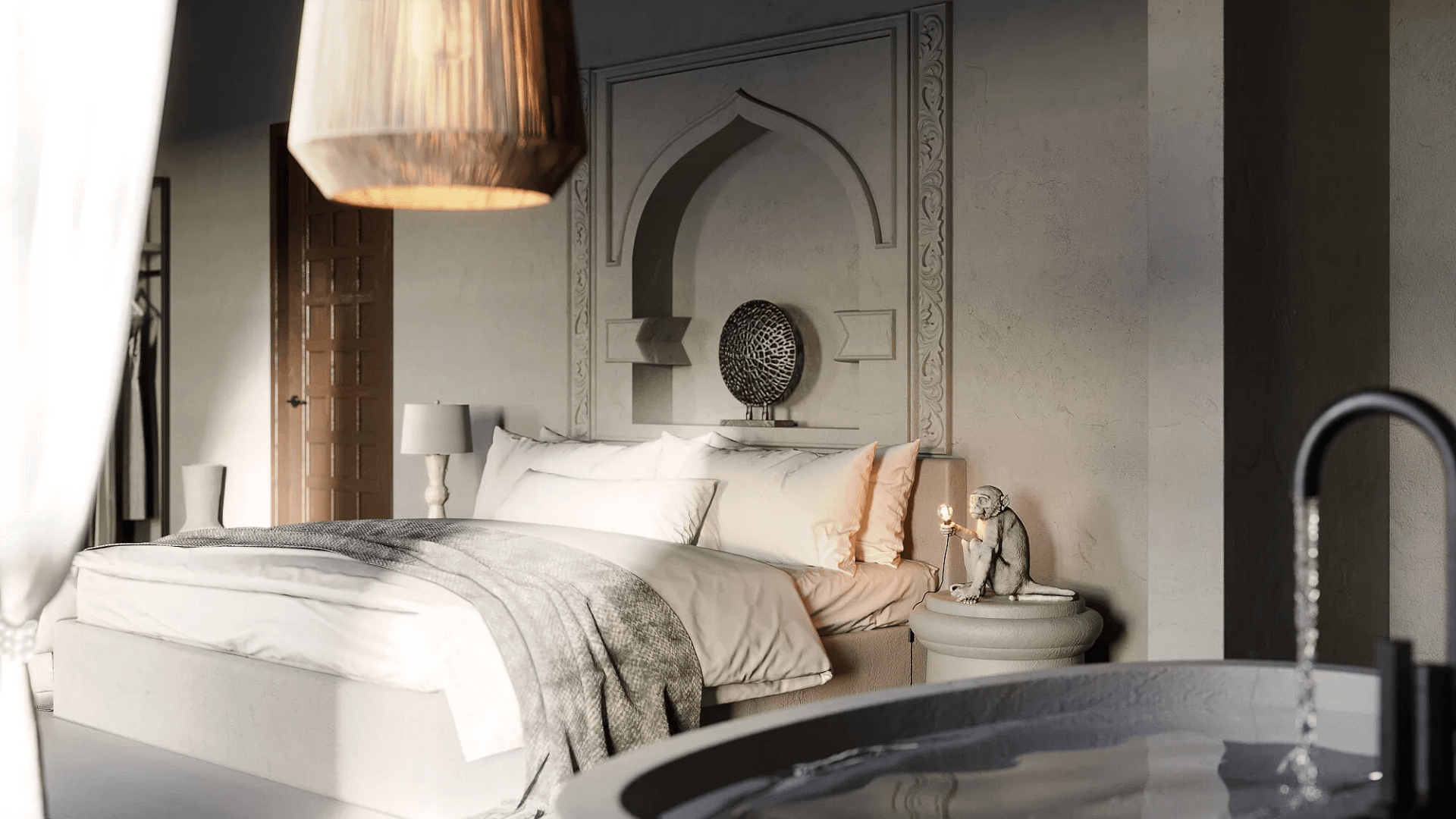
Study their portfolio. Are the renders photorealistic? Do they align with your aesthetic? The right CGI partner should be able to match your style. Whether it’s Scandinavian minimalism or bold maximalism, the portfolio needs to show some examples.
It is also important that the imagery in the portfolio is relevant to your project type. Showing residential and commercial designs, for instance, requires two different sets of knowledge. So if you need CGI services for a dining venue, look for examples of restaurant rendering services.
#6.3. Turnaround Time and Communication

Rendering timelines can affect your entire project. Make sure the studio offers fast delivery and clear communication throughout. Quick responses, iterative feedback loops, and reliable deadlines are a must.
#6.4. Well-Established Workflow

A structured process ensures smooth collaboration. A good studio will guide you through each step – from brief to final delivery – with no surprises along the way. At ArchiCGI, for example, we use a custom CRM, which makes it easy to upload a brief, track the progress, and communicate with the CGI team. Every customer also gets a dedicated project manager and 24/7 support.
#6.5. Timeliness and Safety Guarantees

Your files and project data should be handled securely. Choose a partner that respects NDAs and ensures data safety. Timeliness guarantees are also a bonus. At ArchiCGI, we are happy to sign an NDA upon client request, and we store data securely. Our 600+ artists team ensures that we always deliver on time. And if we don’t, you get the money back.
Take your design presentation to a new level with interior rendering
3D rendering has become a vital tool for modern interior designers. It saves time, improves client communication, and elevates the overall quality of presentations. Whether you’re developing a concept, pitching to a client, or building a marketing portfolio, using a 3D render for interior design makes the entire process smoother and more impactful.
Looking for CGI services to streamline your interior design workflow? Get in touch with ArchiCGI and benefit from a large professional team, fast turnaround times, and top-tier quality that brings your ideas to life.

Stacey Mur
Content Writer, Copywriter
Stacey is a content writer and a CG artist. Outside of work, Stacey enjoys musicals, Star Wars, and art talk. A proud Corgi parent.


